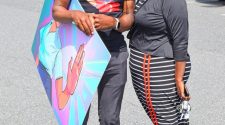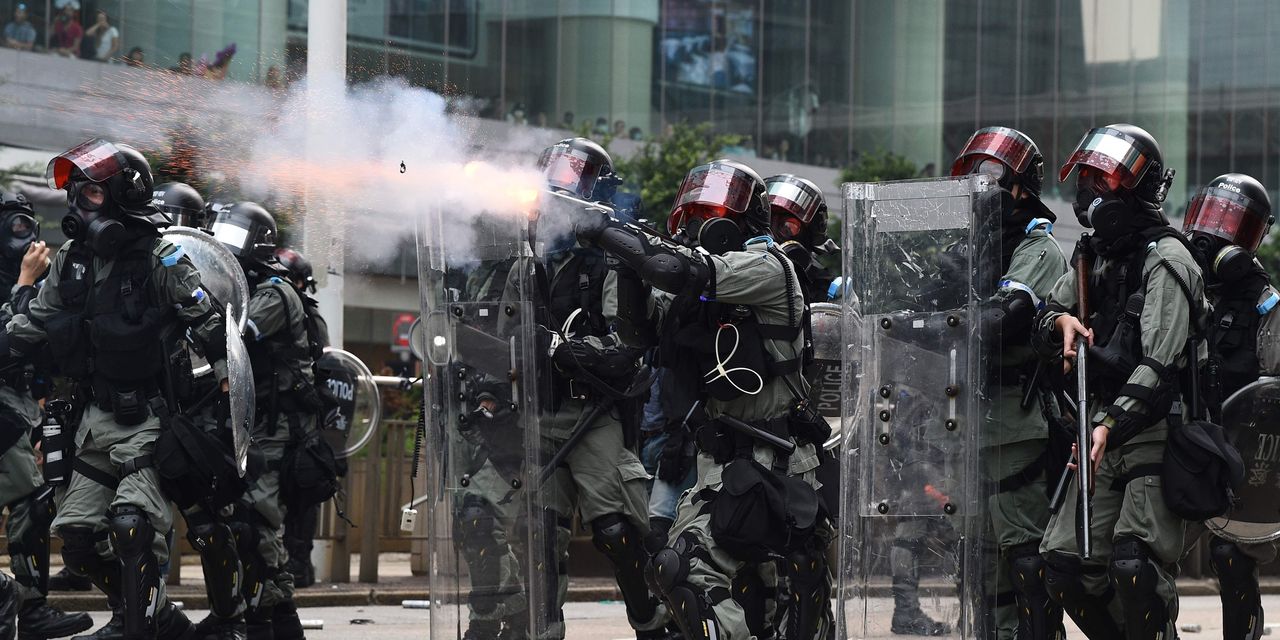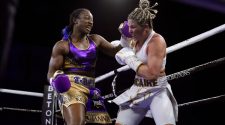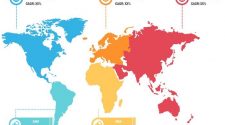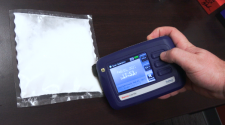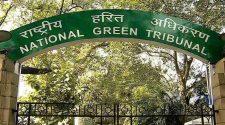HONG KONG—Tens of thousands of protesters poured onto Hong Kong’s streets Sunday, with the fiercest battles in weeks breaking out as demonstrators faced off with police and shouted anti-China slogans ahead of Tuesday’s 70th anniversary of the founding of Communist China.
The protesters had planned to march to the government headquarters in the center of the city under the theme “Global Anti-Totalitarianism Rally.” The police broke up the march at about 4 p.m., an hour or so after it began, engaging the protesters in urban street battles in several districts amid clouds of tear gas and bursts of rubber bullets. They made multiple arrests.
Protesters waved flags from different countries and international institutions, including the U.S. and the United Nations, appealing to the global community to stand with the city’s antigovernment movement. Rallies were taking place or planned in dozens of cities around the world in solidarity with Hong Kong’s protesters.
Hong Kong is in its 17th straight weekend of demonstrations, originally sparked by opposition to a proposed extradition bill that would have allowed suspects to be tried in the mainland’s more opaque legal system. Although the city’s government formally withdrew the bill earlier this month, the continuing protest movement, which has widened to include other demands, has revealed deep-seated fears of China’s tightening rule in the city.
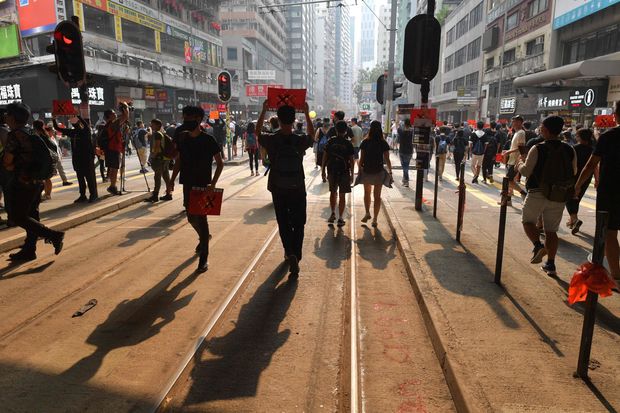
Photo:
nicolas asfouri/Agence France-Presse/Getty Images
The sustained size of the movement and the intense violence of the front-line confrontations with police threaten to mar China’s anniversary celebrations. The movement is the highest-profile public challenge to President Xi Jinping since he rose to power in 2012.
The Hong Kong government has signaled its desire for reconciliation through dialogue in past weeks and hosted a public forum with Chief Executive Carrie Lam on Thursday. But the continued volume and ferocity of the protests suggest the government’s strategy is doing little to quell the unrest.
The organizers of Sunday’s march, who didn’t identify themselves publicly, didn’t apply to the police department for permission, as organizers have for many previous rallies. Police tried to quell the demonstration in the early afternoon, even before it began, firing tear gas and pepper spray in the center of the shopping district of Causeway Bay. Protesters—many dressed in black and some wearing Guy Fawkes masks—began to march anyway, holding a giant yellow banner that said “Restore Hong Kong, Revolution of Our Time.”
As they marched down one of the city’s longest roads, they chanted slogans while periodically breaking into song. The protest anthem’s lyrics include the lines: “Lift up your head and speak up, our voices will ring loud, in the hope that freedom will return here….The sons and daughters march together for justice, a revolution of our time.”
A 15-year-old student, who gave his name as John, marched with a placard featuring an image of the anonymous “Tank man,” who stood alone before a column of Chinese army tanks in the aftermath of the deadly crackdown on the 1989 Tiananmen Square protests.
“We are not radicals, we just want to fight for a better future,” said John, who took the placard from other protesters who were distributing anti-China paraphernalia. He said the placard, captioned “CCP Evil Dictatorship Party,” reflected his misgivings about Communist rule and its impact on civil liberties in Hong Kong. “We want to tell the world that the evils committed by the Communist Party could happen here too,” he said.
Along the demonstration route, protesters vandalized facades of mainland Chinese businesses, including outlets of state-owned banks, plastering them with anti-Communist Party placards and spray-painting protest slogans.
Police on Sunday appeared to be employing different crowd-control strategies than in previous weeks. They fired tear gas even before the rally was to begin, even though nonparticipants were milling around the busy shopping area. And, in contrast to previous instances in which police chased protesters, large groups of police in riot gear waited at intervals along the expected march route.
As police can hold arrested people for 48 hours without charge, those arrested Sunday could still be off the streets for Tuesday’s national day public holiday.
In some confrontations, the police retreated. At around 4:30 p.m., police and protesters engaged in a long standoff outside the luxurious Pacific Place mall. The small contingent of police was surrounded by hundreds of protesters gathering on either side and eventually overwhelmed. One officer could be heard yelling repeatedly, “Team Two, where are you?” into her walkie-talkie, as she looked around following a skirmish with protesters. Police fired multiple rounds of tear gas, then ran to the nearby Admiralty metro station and into waiting police vans. Hundreds of protesters chased the vans, hurling bricks and umbrellas at them as they drove away.
In other districts, protesters vandalized subway stations and other structures, continuing an outburst of anger against the city’s subway company, MTR Corp. In the Wan Chai station, protesters smashed the glass of an elevator and threw objects into the underground station from the street level. Police kept guard inside the station and from an overpass, firing rubber bullets and tear gas at the protesters, who built a defense line behind umbrellas. Sirens, from police vehicles and from alarm systems, were heard throughout the afternoon across the city.

Photo:
mohd rasfan/Agence France-Presse/Getty Images
Hundreds of protesters advanced on the government complex and bombarded its perimeter with bricks and Molotov cocktails, breaking glass panels and setting small fires outside the government buildings.
Police responded by firing tear gas and water cannon, before scores of officers in riot gear came storming out of the complex, firing pepper bullets and more tear gas to disperse the crowds, and making at least a dozen arrests.
One group of protesters was trapped outside a closed entrance to nearby subway station. A dozen or so middle-aged people dressed in yellow vests formed a human chain to protect the protesters from a waiting line of police officers, in a tense standoff.
Rallies in solidarity with Hong Kong’s protest movement were also planned in dozens of cities Sunday, including New York, Tokyo, Warsaw and Almaty, Kazakhstan.
One of the day’s first was in Sydney. Hundreds of people marched through the downtown of the Australian city, many holding anti-China signs and chanting the same slogans and songs that protesters in Hong Kong have used in recent weeks.
March organizers said the turnout—possibly more than 1,000—was better than the 200 or 300 people expected.
Summer Chu, a 21-year-old nursing student, said she drove two hours with her partner to Sydney to attend Sunday’s rally. She said it was important to send a message to her fellow Hongkongers back home that she supports the protest movement even though she is overseas.
“It’s the responsibility for every Hong Kong people, if we don’t stand up right now, we have no chance to do it in the future,” said Ms. Chu, who has been in Australia for about three years.
Ms. Chu said she was concerned that pro-Beijing counter protesters might show up on Sunday. In Australia, there is “just more freedom, and the life is more easy,” said Ms Chu. “I really don’t think there is any future in Hong Kong.”
—Mike Cherney in Sydney, Wenxin Fan and Andrew Dowell contributed to this article.
Write to Natasha Khan at [email protected] and Chun Han Wong at [email protected]
Copyright ©2019 Dow Jones & Company, Inc. All Rights Reserved. 87990cbe856818d5eddac44c7b1cdeb8


